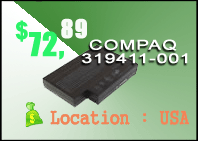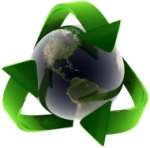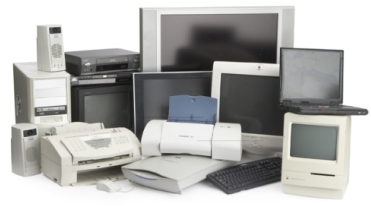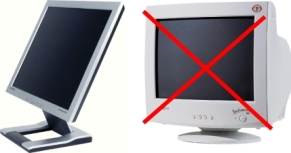- Outdoor Parts
- Alinco Radio Battery
- Icom Radio Battery
- Kenwood Radio Battery
- Motorola Radio Battery
- Standard Radio Battery
- Yaesu Radio Battery
- Two Way Radio Battery
- Power Tool Battery
- Dewalt Power Tool Battery
- Makita Power Tool Battery
- Laptop Battery
- Battery Charger
- Camcorder Battery
- Digital Camera Battery
- Security Tool
- Mini Speaker
- Cooling Fan
- Coin Batteries
- Helicopter Toy
- Laser Pointer
- Memory Cards
- MP4 Players
- LED Flash Light
- LED Strip Light
- Fitness & Beauty
- Laptop Webcam
- scarf-shawl
- health-beauty
- Useful Tools
- Bluetooth Headset
- Wireless Antenna
- Game Accessories
- Video Cables & Connectors
Go Green with Your Electronics
Now that going green is no longer an option, but a necessity, we are progressively looking for new ways to preserve our environment. Although it may seem like a simple concept - it's actually very difficult to maintain a level of environmental protection without sacrificing some convenience. Recycling does help out significantly, but there are plenty more ways to push towards a cleaner planet without much extra conscious effort.
Since electronic devices have become huge part of our modern lives, it makes this category one of the most important ways to control damage to the environment. You don't have to live in a solar powered teepee with only an FM radio to go green; it's a matter of smart purchasing, use, and disposal.
Statistics - (Source: Treehugger.com)
40% of the energy used for electronics in your home is used while these devices are turned off.
70 percent of all hazardous waste is electronic equipment.
15 billion batteries are produced annually worldwide.
Of the $250 billion spent per year on powering computers worldwide, only about 15% of that power is spent computing-the rest is wasted idling.
In the US, energy efficient battery chargers could save American consumers more than 1 billion kilowatt hours of power per year, which would save more than $100 million each year, and prevent the release of more than a million tons of greenhouse gasses.
Making the average PC requires 10 times the weight of the product in chemicals and fossil fuels.
Green Guidelines
Use rechargeable batteries - Instead of purchasing disposable alkaline batteries over and over again, consider purchasing a set of rechargeable NiMH batteries to save money and help reduce land fill waste. Rechargeable NiMH batteries are a great choice. Even though they cost more up front, they'll quickly pay for themselves the more you use them. In addition, a fully charged NiMH battery will last longer than an alkaline battery for one cycle.

Use solar powered batteries and solar chargers - Solar chargers utilize energy directly from the sun and turn it into usable power. Because sunlight is infinitely free to everyone, it makes for an extremely great energy source. Without the need to generate artificial energy - we preserve our valuable recources and reduce the amount of emissions that pollute the air.For more Green Electronic Accessoeis, Maybe you should have a look at B2cpowershop
Recycle your old batteries - Throwing out your old batteries in the trash only adds unnecessary waste to the environment. Although dead batteries may be of no use to you, recycling companies can use their components to supply manufacturers with recycled materials instead of taking from the earth's recourses. Here are the links to our Battery Disposal Guide and Battery Recycling Program.
Recycle your old electronics - From computers to TVs, CD players and cell phones; general electronic equipment contains heavy metals and materials that are hazardous to the environment. Furthermore, these "hazardous materials" are actually valuable to recycling companies since they can be transformed into usable material for other appliances.

Eliminate Kilo Watt Guzzlers (Vampire Power) - Did you know that your electronics and applicances could be sucking up electricity even while they are turned off? This is called vampire power. As long as a power cord is plugged into an outlet, current will flow through and run your electric bill up. Although it may not be a lot of current, all the appliances can add up and possibly do some noticeable damage to your wallet. Purchasing a "smart" power strip will prevent this from happening because they sense when electronics are turned off. They can also turn off the strip when one main unit is powered down. (Note that some electronics need to be turned off via the on/off switch before cutting the power).
Choose energy efficient electronics - There are some electronics out there that use up more energy than others. It usually depends on whether or not they are fitted with energy saving technology. For example, if you are out shopping for a new flat screen television, consider purchasing an LCD instead of plasma since LCD's require less energy. Furthermore, visit EnergyStar.gov to help you identify energy saving appliances ranging from computers to air conditioning systems.
EPEAT - EPEAT is a system that compares select desktop computers, notebooks and monitors based on their environmental impact. A product with a higher EPEAT rating is considered "greener" making it an environmentally friendly choice.
RoHS - The RoHS directive stands for "the restriction of the use of certain hazardous substances in electrical and electronic equipment". This directive bans new electronic equipment containing levels of lead, cadmium, mercury, hexavalent chromium, polybrominated biphenyl (PBB) and polybrominated diphenyl ether (PBDE) flame retardants. Look for electronics with RoHS approval stamps to ensure that they do not contain any hazardous materials.

It's unfortunate to know that many manuals do not contain the information necessary to promote environmental preservation. Instead they focus on operation of the device. In this guide, went over tips on how to save wasted energy, choose greener devices, and what to do about e-waste and electronics recycling.
There are many more ways to go green with your electronics, these are only a few. If you're really interested in preserving the Earth and moving along with the green movement, just be conscious of your electronics in terms of choice, usage and disposal.
If you have any more ideas on going green with electronics, please comment in the box below. You will be helping others protect our precious environment.
- FeaturedTwo Way Radio Battery
- KENWOOD PB-39 Two Way Radio Battery
- KENWOOD PB-17 Two Way Radio Battery
- KENWOOD KNB-29 Battery
- KENWOOD KNB-31A Battery
- MOTOROLA NNTN7335 Battery
- MOTOROLA RNN4006 Two Way Radio Battery
- MOTOROLA WPNN4013 Battery
- MOTOROLA NNTN4497 Battery
- MOTOROLA PMNN4063 Two Way Radio Battery
- YAESU FNB-72 Two Way Radio Battery
- YAESU FNB-47 Battery
- YAESU FNB-12 Battery
- YAESU FNB-V57 Battery
- YAESU FNB-V68LI Two Way Radio Battery
- New Two Way Radio Battery
- YAESU FT-817 2Way Radio Battery
- YAESU VX-6 Battery
- YAESU FT-26 2Way Radio Battery
- YAESU VX-600 Battery
- KENWOOD TK-2140 Battery
- KENWOOD TH-27 Two Way Radio Battery
- KENWOOD TK250 2Way Radio Battery
- KENWOOD TK-2180 2Way Radio Battery
- KENWOOD TK-2200 2Way Radio Battery
- MOTOROLA CP250 Battery
- MOTOROLA GP88 2Way Radio Battery
- MOTOROLA MX1000 Battery
- MOTOROLA TalkAbout T4800 Two Way Radio Battery
- MOTOROLA XTS1500 2Way Radio Battery
- ICOM IC-A23 2Way Radio Battery
- ICOM IC-H2 2Way Radio Battery
- ICOM IC-A6 Battery
- ICOM IC-F25 2Way Radio Battery
- ICOM IC-F3 Battery



